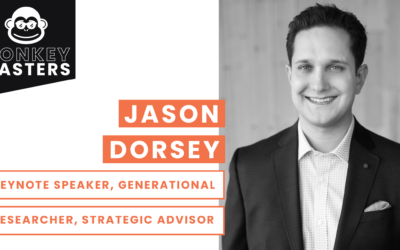In Part Three of this series, I dig into my “secret formula” for being discerning when it comes to recurring revenue businesses as an investment opportunity – and how to apply it to make that revenue STICKY SWEET!
In my last post, Feel the Churn, I covered how to calculate net churn rate in my secret formula for looking at recurring revenue. In this post, I’ll focus on how to assess the Stickiness Rate, the hardest part to measure but likely the most important…
What is the “stickiest” solution in technology, and how do you measure this accurately? This is the really, really hard question because it involves a lot of subjective components that don’t allow for a true or easy quantitative assessment.
However, to ignore this is a real risk when assessing recurring revenue and the value placed on it. To get a sense for this, let me pose a simple question: what is the most profitable part of Oracle’s business? It has become widely known that the revenue stream that Oracle derives from its annual Support Agreements for its database software (historically sold on premise versus “as a service”) is highly profitable and the reason why is pretty simple.
The database is incredibly sticky, deeply integrated into key business processes and a high-risk piece of technology to remove or replace. Oracle is also the market leader and builds superior database software. As a result, customers have huge switching cost to consider and, as result, Oracle has the enviable position of pricing power and the lack of substitution – so they can sell customers a high margin Support Contract and yet still retain the bulk of their customers year after year.
I would assert that even if Oracle switched to an “auto bill” system and removed any selling from their Support Agreements, they would still obtain a very high retention rate / low churn rate.
How to Measure Stickiness (No more ice cream analogies, I promise!)
To bring this component even more to life, let me provide you with five key attributes for stickiness, all of which can be given a score of 1–20. By adding up the score of each of these five attributes, you can come up with a factor that can be multiplied against Net Churn Rate to derive a real value of recurring revenue.
CONTRACT TERM
For years the razor / razor blade business was the poster child for recurring revenue, despite having no contractual relationship at all with end customers. Rather, companies like Gillette relied on brand, customer loyalty and product place to drive repeat or recurring purchases.
Most (but not all) SaaS businesses have surpassed this business model and sell their subscription on an annual basis with specific contract terms. But you have to examine just how strong this contractual relationship is in reality. For example, is the solution sold with a multiyear contract with punitive terms, or is it sold with a monthly subscription that is cancelable at any time? The first would score 19–20 points in my model while the latter might score close to 3–4. A lot of companies count recurring revenue that is closer to the razor blade model (i.e. cancelable) than you think – and to ignore this is a huge mistake.
LEVEL OF INTEGRATION WITH OTHER SYSTEMS
This can be less obvious, but you need to assess what level forward or backward integration the offering has with other solutions. High levels of integration can drive up stickiness more than you might expect.
For example, I know of a SaaS business that offers its solution for free to government agencies in exchange for being the system of record for payments from local citizens for parking or other motor vehicle violations. The SaaS business simply takes a small fee from every payment that is processed via this system of record. As such, the contract terms are meaningless – but imagine the value of this business when hundreds of thousands of citizens are using it to pay for parking tickets! In this example, the company I described would score very high in this category.
EASE OF SWITCHING
This concept is related to but not entirely the same as integration. It speaks to how many alternatives are in the marketplace and how much pain (real or perceived) a customer will expect to feel by switching to a new provider.
For example, if a SaaS solution becomes the system of record for key data such as financial or accounting (think Workday), the idea of switching to a new solution is really scary. Or even if the data migration required to switch from Oracle to an open source solution wasn’t that significant, does an e-commerce company really want to take the chance to make the switch?
However, other solutions that are really transactional or price sensitive (think conference call providers) are much easier to switch on and off.
MISSION CRITICALITY
This concept is tied to the factors above, but again a bit difference as it speaks to just how important the offering is in the eyes of the customer.
For example, how much business risk is there when a 30-employee company chooses to switch its talent management solution? But what if that same company built its SaaS solution onto a web service provider like Google or AWS?
As a CEO, I would be much more open to switching talent management (sorry, HR) than my data center infrastructure provider.
LEVEL OF CUSTOMIZATION REQUIRED FOR A CUSTOMER TO SEE REAL VALUE
Does the SaaS offering require a level of customization that is significant to allow the customer to see real value? A lot of times this can be seen as a negative for startups trying to get market capture, but over time this can drive up stickiness in a big way.
For this reason, key systems such as billing, financial, etc., might struggle to get new customers in the early days, but once the integration is complete the customer is highly unlikely to even consider a new provider, regardless of contract terms. If a SaaS offering requires a fair amount of customization, I would give a much higher score versus something that works in plain vanilla / one-size-fits-all mode.
Netting it all out
Obviously this isn’t perfect, and even the simplest of use cases won’t yield exact answers – but the wide spectrum of business models, offerings and competitive landscapes don’t allow for perfect or easy answers.
But that is the point…
Investors and entrepreneurs are well served to think about both aspects of the formula in concert to determine the future value of the business and offering in question. The key is to assess both the sales / customer success aspect at play (as measured by net churn rate) AND the solution offering (and terms around it) that can help drive stickiness and customer retention.
By focusing on both parts of the formula, you can tell just what type of ice cream you are getting and avoid the temptation to go with the easy answer that comes with assuming that one size fits all.


